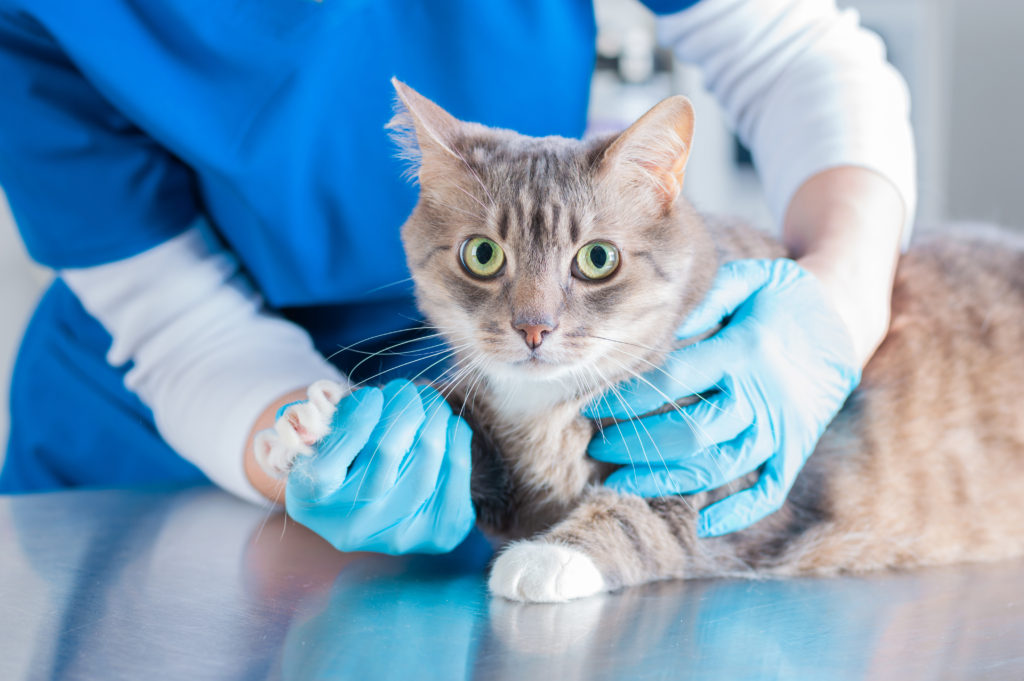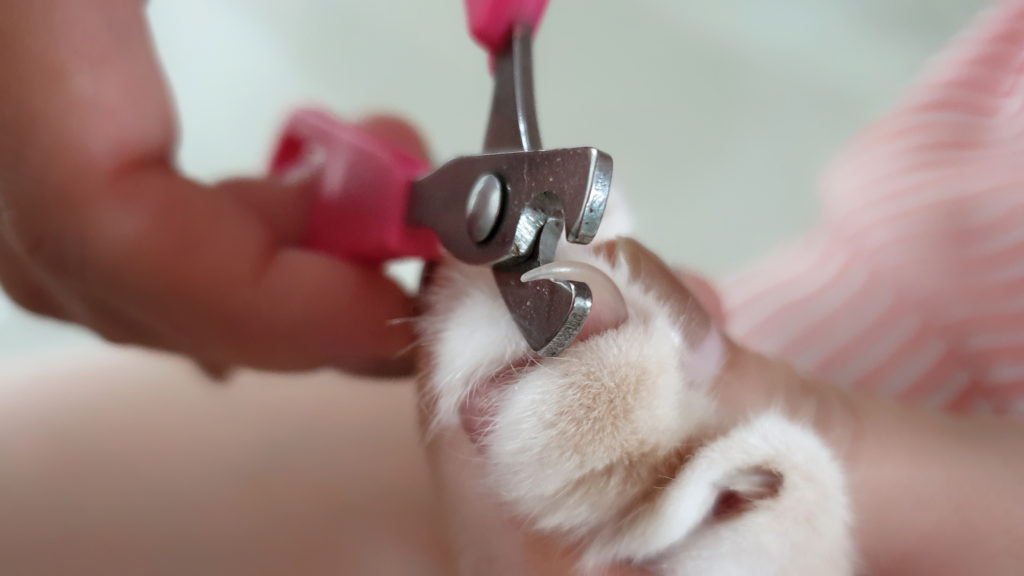Declawing, also known as onychectomy, is typically done to prevent cats from scratching people and their personal belongings. This procedure is outlawed in most of the European Union and at least ten other countries. It is still legal in most of the United States, the only state that has officially banned this procedure is New York. We are going to go over the pros, cons, and alternatives to declawing your cat.
Affiliate Disclaimer: This post may contain affiliate links and we may earn a small commission when you click on the links at no additional cost to you so we can continue to provide you with helpful tips and tricks. As an Amazon Affiliate we earn from qualifying purchases. Thank you for supporting our small business.
What Is Declawing
Declawing is when your veterinarian removes your cat’s claws. It’s not just the claws that get removed, they have to remove the bone that the claws grow out of as well. If they don’t properly remove that bone the claws will start to regrow which can potentially lead to an infection. There are a few different methods for declawing a cat. One method is where the doctors will use a guillotine looking instrument that will cut a straight line through the joint. Not only does it cut the bone but it cuts the pads of your cat’s paws as well. The tissue damage to the pads can lead to discomfort even when the paws are fully healed. It’s similar to amputating all of your fingers down to your last knuckle. Another less traumatic version would be cosmetic declawing. This is where they use a small curved blade to remove the claw along with the bone that they grow out of leaving the pads on the bottom of their feet intact.
Cons
- Surgical Risks: All surgeries come with risks. If the growth center isn’t properly removed their claws could regrow deformed causing nerve damage, stress, and chronic pain.
- Litter Box Issues: After the surgery, your cat’s paws will be understandably tender. Your vet will most likely recommend that you put shredded newspapers in your cat’s litterbox to prevent your cat’s newly declawed paws from becoming irritated. Even with the newspaper, your cat will experience some pain when trying to cover up their waste, resulting in a negative association with litterboxes. So when you pair that pain with an unfamiliar litter replacement there is a chance your cat may stop using litter boxes entirely.
- Indoor Only (With Exceptions): Once you declaw your cat they can no longer be left outside alone for obvious reasons. Allowing your cat to go outside alone could be looked at as cruel because they can no longer defend themselves properly. They won’t even be able to climb up a tree or fence to get away from predators.
- Tension: Cat’s claws are used to stretch the muscles in their paws, shoulders, and back. Without their claws, they can’t dig into scratching posts to stretch those muscles causing them pain and discomfort.
Pros
- Prevents Scratches: Since your cat will no longer have claws they can’t scratch you. No one enjoys being scratched regardless of what age they are.
- Protects Your Property: Cat’s don’t just scratch fabric they also have the tendency to scratch wood surfaces as well. Declawing protects your personal property
Alternatives
Onychectomy is a serious and painful procedure that is typically used to prevent property damage and physical damage to a cat’s owner and guests. Before you decide to get your cat declawed consider these alternatives.
- Cat Nail Caps: These caps fit nicely over your cat’s nails. You do have to trim the nail a bit before putting them on, but they tend to last for an entire month. I use them on my cat and she doesn’t mind them at all. That’s not the case for all cats, some will chew them off, you could spray some No Chew Spray by Rocco & Roxie on their paws to condition them to not chew the nail caps off. If that doesn’t work we have some other suggestions below that might.
- Cat Nail Clippers: You can clip your cat’s nails to lessen the damage to your personal property. Be careful of that little pink triangle inside of their nail because it will cause them a lot of pain if you cut this blood vessel full of nerves. I personally love Pet Republique’s Nail Clippers because they donate 15% of their profits to the American Animal Rescue Society.
- Furniture Protector: These are great for when you are training your kitten or cat to not scratch the couch. You should only use them for about 3 months. Once your cat has been trained to scratch their scratching posts instead of the furniture you remove them.
- Scratching post: There are several steps you can take to get your cat to use a scratching post. Here is a link to a WikiHow article called How to Get Your Cat to Use a Scratching Post. You can also add a bit of catnip to your cat’s post to entice them to use it.
In Conclusion
Cats have a natural instinct to scratch things. It's how they stretch their muscles, remove the dead husks from their claws, and mark their territory. Declawing your cat should be used as a last resort. If you are seriously considering declawing your cat make sure to go over the risks and alternatives with your Veterinarian before moving forward with the surgery.


